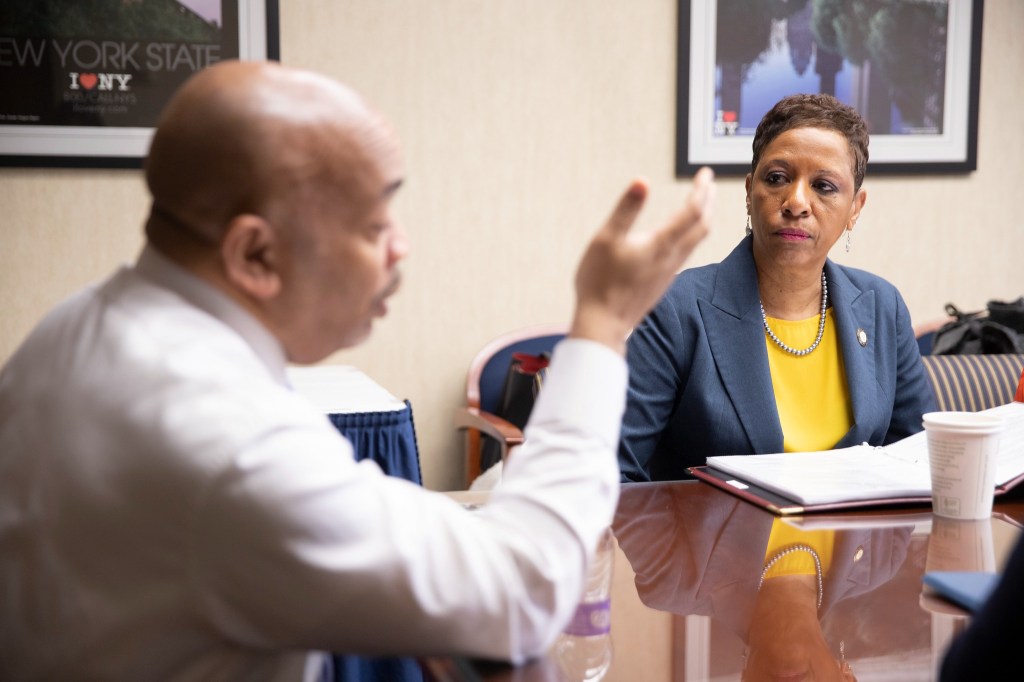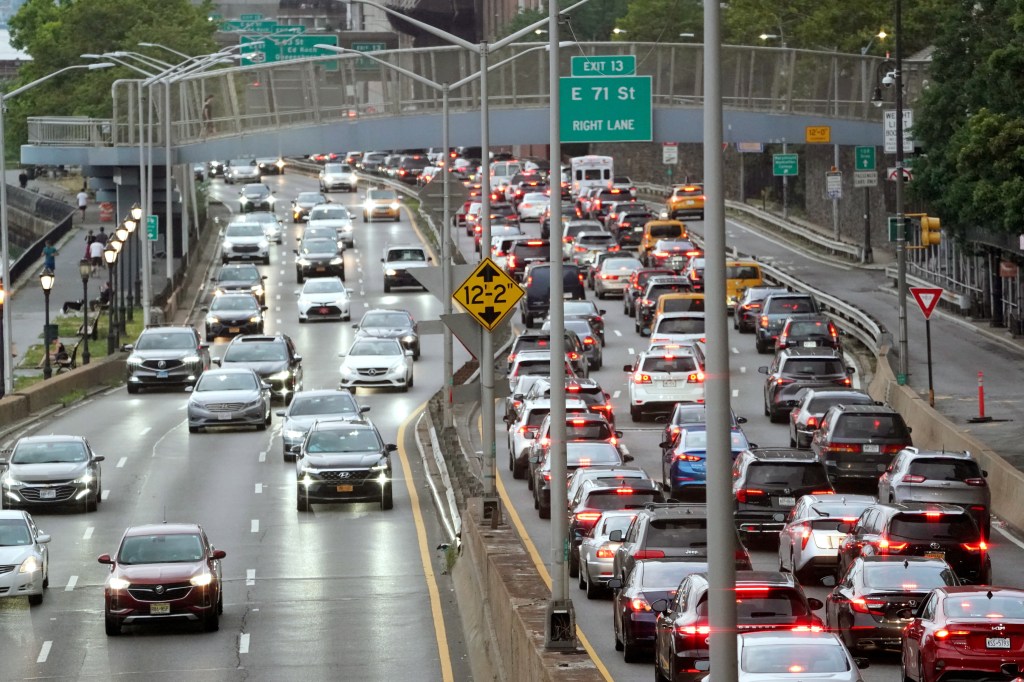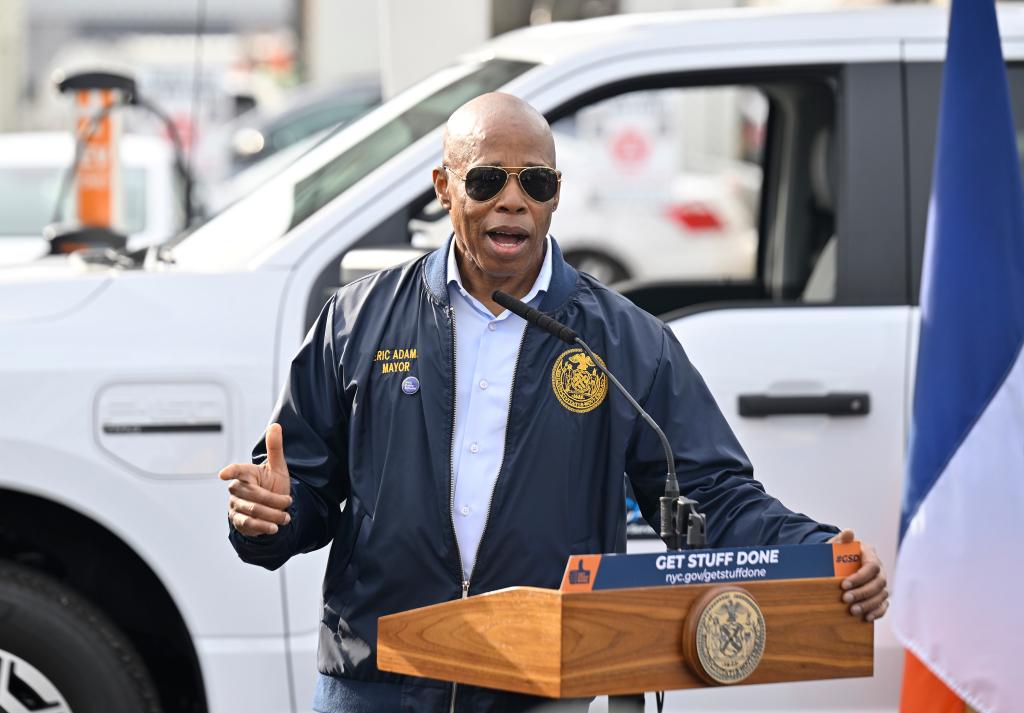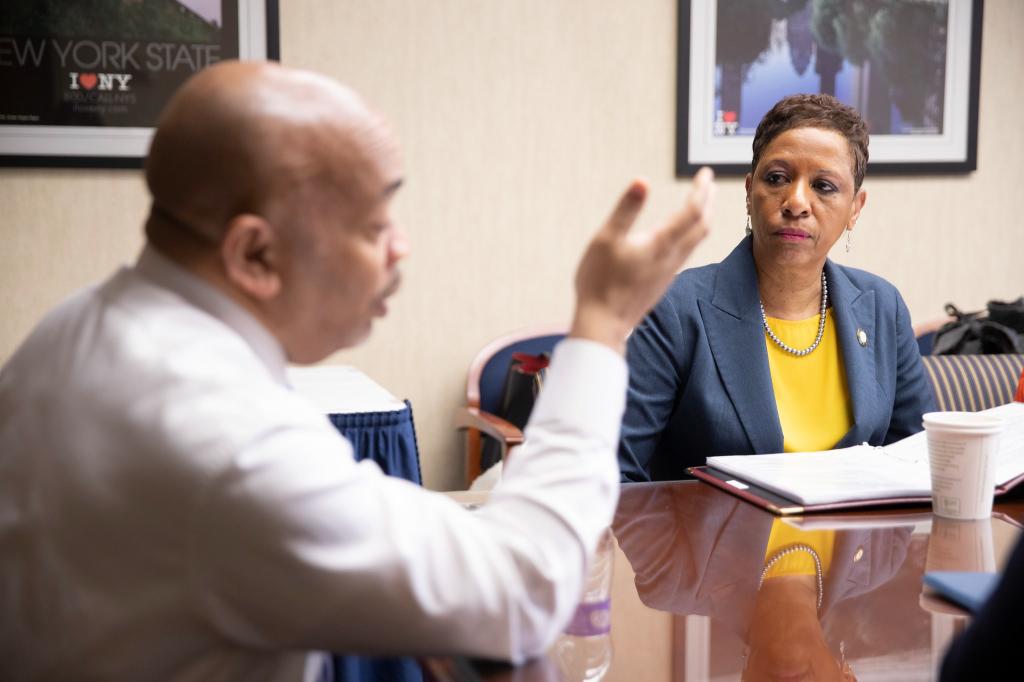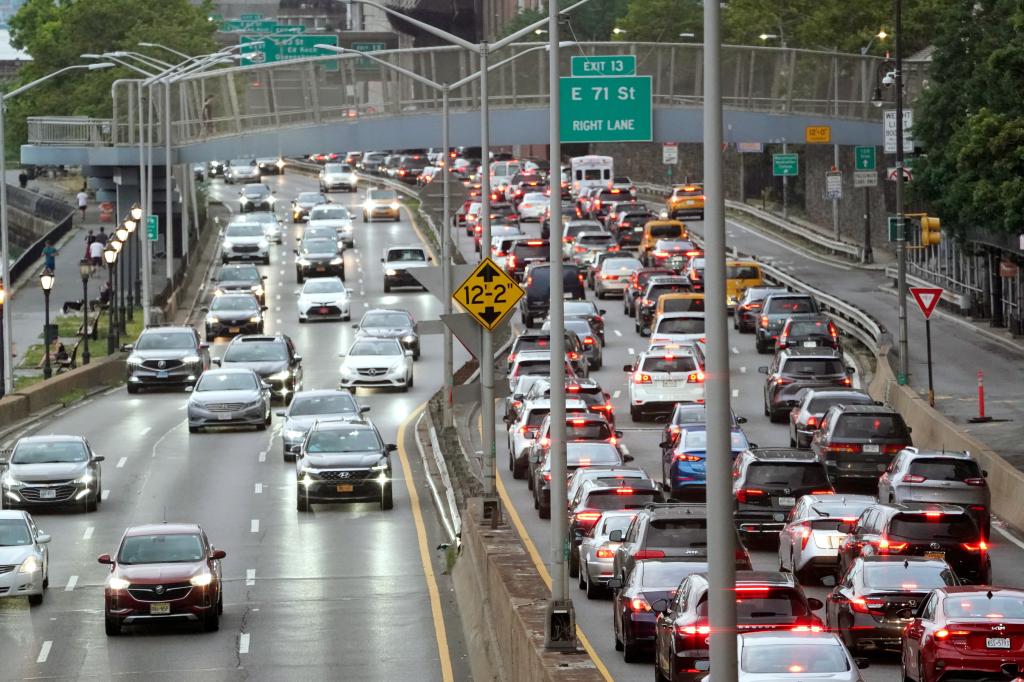NYC Mayor Eric Adams, Council Speaker Adrienne Adams distance themselves from MTA’s $15 congestion toll
Contact The Author
Mayor Eric Adams and New York City Council Speaker Adrienne Adams refused to support the state’s controversial congestion pricing proposal when put on the hot seat Tuesday in Albany, with Hizzoner telling lawmakers he wants a “different version” of the program.
The two city leaders made their comments as fury continues to build among outer-borough and suburban drivers over the $15 daily fee to drive south of 60th Street in Manhattan under the program that has faced a slew of court challenges and could begin as soon as May.
“When this decision came out of the state, I would have loved for the city to have more power and authority over this, as these are our streets,” the mayor told lawmakers during his marathon budget hearing at the Capitol. “We should have had more power and authority — and I think we would have had a different version.”
City Hall has been pushing the MTA to include exemptions from the toll for city employees and people driving to hospitals.
Additionally, Adams has pushed the transit agency to go beyond its current plans to exempt taxi and for-hire vehicles from the toll and nix its plans to charge riders a fee for hailing a car inside of the congestion zone.
The Speaker, who is not related to the mayor, was similarly non-committal when pressed by a suburban Republican lawmaker if she supposed the $15 proposal.
“It’s a loaded question in Queens,” Adams said during her ‘Tin Cup Day’ testimony.
“So I’ll take that as a yes,” said Senator Alexis Weik (R-Nassau/Suffolk).
“You can take it as it’s a loaded question for Queens,” the speaker retorted. “We’re still checking it out and trying to figure it out.”
The MTA has rejected those calls arguing that any exemption would have to be offset with a higher daily toll to make the numbers work. The law, passed by state lawmakers in 2019, requires the toll to make $1 billion a year so the MTA can finance $15 billion worth of construction projects.
The toll would be heavily discounted during overnight hours. Container and articulated trucks would have to pay a higher daily rate, while motorcyclists would shell out just $7.50.
Opponents have gone to court to challenge the environmental approvals granted to the MTA by federal regulators in Washington — and argue the toll amounts to taxing drivers and commuters to pay for wasteful transit projects.
A recent series of stories in The Post revealed how excessive station decisions have inflated the costs of the second leg of the Second Avenue subway, prompting a year-long design review that is ongoing and has already identified $300 million in savings.
Proponents argue it will get more than 170,000 cars off the streets of traffic-clogged Manhattan and pay for major improvements to the system, including new trains and computerized signals are speed service and dramatically improve reliability and expanding the subway into East Harlem.
MTA officials issued a full list of projects that could be put on ice if court fights either delay or cancel the toll on Tuesday.
In addition to the Second Avenue subway project, officials said delays the toll fight could scotch plans to buy another 40 new 10-car trains for the lettered lines and replacing and upgrading signals that choke service on the A and C lines in Brooklyn.
“We have about a million people commuting into Manhattan everyday and 80 percent of them use mass transit,” said the MTA’s construction chief, Jamie Torres-Springer, in an interview. “It’s our obligation to improve the system on their behalf and that’s what we’re doing with congestion pricing.”

